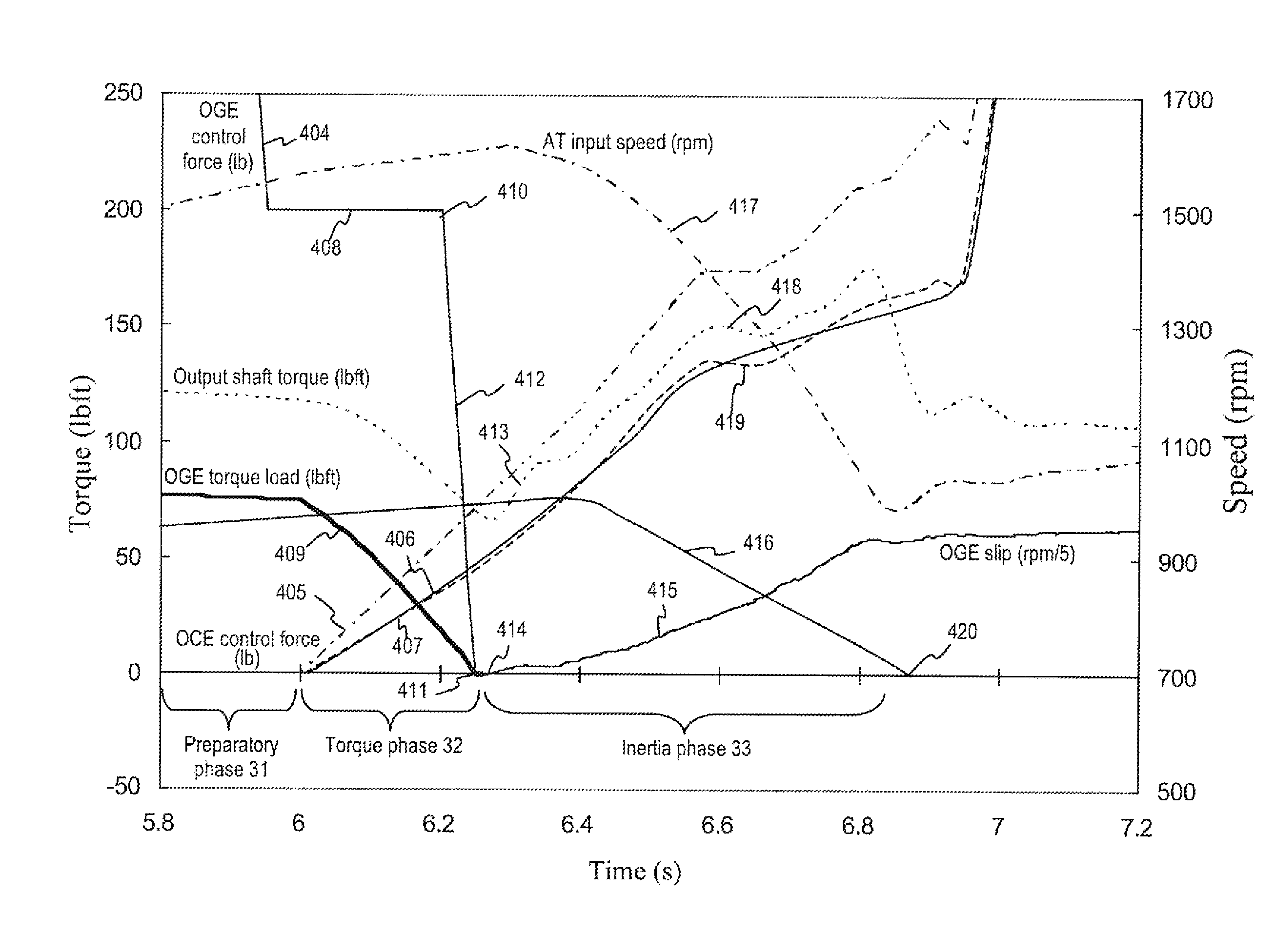Closed-loop torque phase control for shifting automatic transmission gear ratios based on friction element load estimation
a technology of automatic transmission and phase control, applied in mechanical equipment, digital data processing details, instruments, etc., can solve the problems of deep and wide torque hole for inconsistent shift feel, inconsistent shift feel, and vehicle occupants' perception of shift shock, so as to reduce engine flair and shift shock, increase torque capacity, and reduce torque capacity
- Summary
- Abstract
- Description
- Claims
- Application Information
AI Technical Summary
Benefits of technology
Problems solved by technology
Method used
Image
Examples
Embodiment Construction
[0050]With initial reference to FIG. 8, there is shown an automotive transmission employing the invention. As this automatic transmission arrangement is similar to the one schematically illustrated in FIG. 1, all the same parts have been indicated with corresponding reference numbers and therefore a duplicate discussion of these parts will not be made here. Instead, of particular importance is the addition of a torque sensor 120 located in friction element C, a load sensor 130 located in friction element D, and a torque sensor 131 located in transmission output shaft 24, all connected to controller 4 for controlling various functions of transmission 2 as will be more fully discussed below.
[0051]FIGS. 8A-8D also show additional automotive transmissions employing the invention. As these automatic transmission arrangements are similar to the one schematically illustrated in FIG. 8, all the same parts have been indicated with corresponding reference numbers and, therefore, a duplicate d...
PUM
| Property | Measurement | Unit |
|---|---|---|
| speed ratio | aaaaa | aaaaa |
| torque capacity | aaaaa | aaaaa |
| torque | aaaaa | aaaaa |
Abstract
Description
Claims
Application Information
 Login to View More
Login to View More - R&D
- Intellectual Property
- Life Sciences
- Materials
- Tech Scout
- Unparalleled Data Quality
- Higher Quality Content
- 60% Fewer Hallucinations
Browse by: Latest US Patents, China's latest patents, Technical Efficacy Thesaurus, Application Domain, Technology Topic, Popular Technical Reports.
© 2025 PatSnap. All rights reserved.Legal|Privacy policy|Modern Slavery Act Transparency Statement|Sitemap|About US| Contact US: help@patsnap.com



